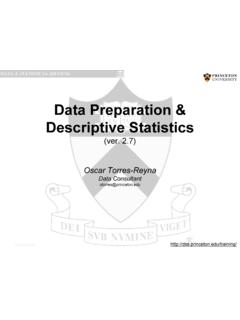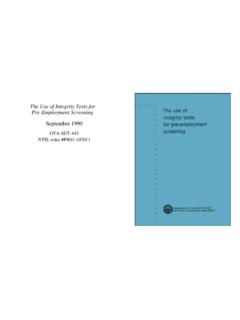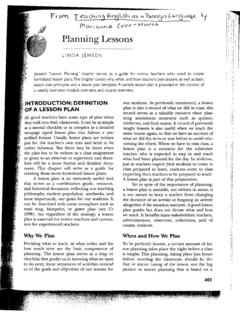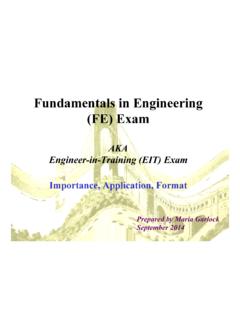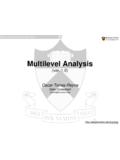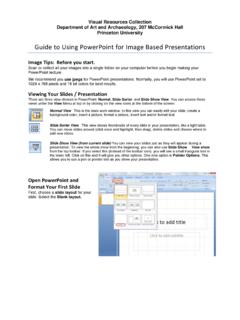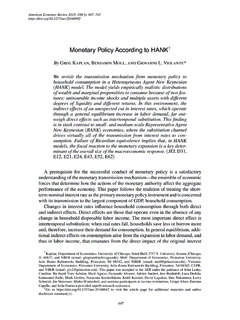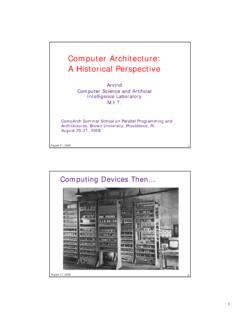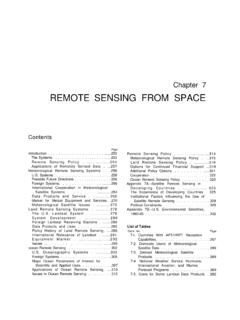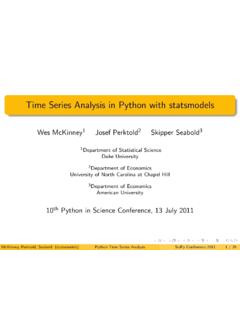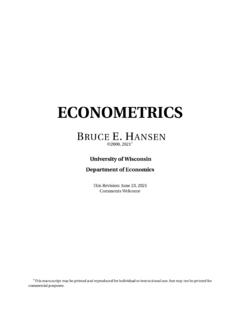Transcription of Vector Autoregressions - Princeton University
1 Journal of EconomicPerspectives-Volume15, Number4 -Fall 2001-Pages 101-115. Vector Autoregressions James H. Stock and Mark W. Watson s M X acroeconometriciansdo four things: describe and summarizemacro- economic data, make macroeconomic forecasts, quantify what we do or do not know about the true structure of the macroeconomy, and advise (and sometimes become) macroeconomic policymakers. In the 1970s, these four tasks- data description, forecasting, structural inference and policy analysis-were performed using a variety of techniques. These ranged from large models with hundreds of equations to single-equation models that focused on interactions of a few variables to simple univariate time series models involving only a single variable.
2 But after the macroeconomic chaos of the 1970s, none of these approaches appeared especially trustworthy. Two decades ago, Christopher Sims (1980) provided a new macroeconometric framework that held great promise: Vector Autoregressions (VARs). A univariate autoregression is a single-equation, single-variable linear model in which the cur- rent value of a variable is explained by its own lagged values. A VAR is an n-equation, n-variable linear model in which each variable is in turn explained by its own lagged values, plus current and past values of the remaining n - 1 variables. This simple framework provides a systematic way to capture rich dynamics in multiple time series, and the statistical toolkit that came with VARs was easy to use and to interpret.
3 As Sims (1980) and others argued in a series of influential early papers, VARs held out the promise of providing a coherent and credible approach to data description, forecasting, structural inference and policy analysis. In this article, we assess how well VARs have addressed these four macroecono- * JamesH. Stockis theRoyE. LarsenProfessorof PoliticalEconomy,John F. KennedySchool of Government,Harvard University ,Cambridge, W. Watsonis Profes- sor of Economicsand PublicAffairs,Departmentof Economicsand WoodrowWilsonSchool ofPublic and InternationalAffairs,PrincetonUniversity , Princeton , authors areResearchAssociates,National Bureau of EconomicResearch,Cambridge,Massachusetts .
4 102 Journal of EconomicPerspectives metric tasks.' Our answer is "it depends." In data description and forecasting, VARs have proven to be powerful and reliable tools that are now, rightly, in everyday use. Structural inference and policy analysis are, however, inherently more difficult because they require differentiating between correlation and causation; this is the "identification problem," in the jargon of econometrics. This problem cannot be solved by a purely statistical tool, even a powerful one like a VAR. Rather, economic theory or institutional knowledge is required to solve the identification (causation versus correlation) problem.
5 A Peek Inside the VAR Toolkit What, precisely, is the effect of a 100-basis-point hike in the federal funds interest rate on the rate of inflation one year hence? How big an interest rate cut is needed to offset an expected half percentage point rise in the unemployment rate? How well does the Phillips curve predict inflation? What fraction of the variation in inflation in the past 40 years is due to monetary policy as opposed to external shocks? Many macroeconomists like to think they know the answers to these and similar questions, perhaps with a modest range of uncertainty. In the next two sections, we take a quantitative look at these and related questions using several three-variable VARs estimated using quarterly data on the rate of price inflation (iit), the unemployment rate (ut) and the interest rate (Re,specifically, the federal funds rate) from 1960:I-2000 First, we construct and examine these models as a way to display the VAR toolkit; criticisms are reserved for the next section.
6 VARs come in three varieties: reduced form, recursive and structural. A reducedform VARexpresses each variable as a linear function of its own past values, the past values of all other variables being considered and a serially uncor- related error term. Thus, in our example, the VAR involves three equations: current unemployment as a function of past values of unemployment, inflation and the interest rate; inflation as a function of past values of inflation, unemployment and the interest rate; and similarly for the interest rate equation. Each equation is estimated by ordinary least squares regression. The number of lagged values to include in each equation can be determined by a number of different methods, and we will use four lags in our The error terms in these regressions are the "surprise"movements in the variables after taking its past values into account.
7 If the different variables are correlated with each other-as they typically are in 1. Readers interested in more detail than provided in this brief tutorial should see Hamilton's (1994). textbook or Watson's (1994) survey article. 2. The inflation data are computed as 7rt 4OO1n(PIP,-1), where P, is the chain-weighted GDP price index and u, is the civilian unemployment rate. Quarterly data on u, and RI are formed by taking quarterly averages of their monthly values. 3 Frequently, the Akaike (AIC) or Bayes (BIC) information criteria are used; for a discussion, see Luitkepohl (1993, chapter 4). James H. Stockand Mark W Watson 103. macroeconomic applications-then the error terms in the reduced form model will also be correlated across equations.
8 A recursiveVARconstructs the error terms in each regression equation to be uncorrelated with the error in the preceding equations. This is done byjudiciously including some contemporaneous values as regressors. Consider a three-variable VAR, ordered as 1) inflation, 2) the unemployment rate, and 3) the interest rate. In the first equation of the corresponding recursive VAR, inflation is the dependent variable, and the regressors are lagged values of all three variables. In the second equation, the unemployment rate is the dependent variable, and the regressors are lags of all three variables plus the current value of the inflation rate. The interest rate is the dependent variable in the third equation, and the regressors are lags of all three variables, the current value of the inflation rate plus the current value of the unemployment rate.
9 Estimation of each equation by ordinary least squares produces residuals that are uncorrelated across Evidently, the results depend on the order of the variables: changing the order changes the VAR. equations, coefficients, and residuals, and there are n! recursive VARs representing all possible orderings. A structuralVARuses economic theory to sort out the contemporaneous links among the variables (Bernanke, 1986; Blanchard and Watson, 1986; Sims, 1986). Structural VARs require "identifying assumptions" that allow correlations to be interpreted causally. These identifying assumptions can involve the entire VAR, so that all of the causal links in the model are spelled out, or just a single equation, so that only a specific causal link is identified.
10 This produces instrumental variables that permit the contemporaneous links to be estimated using instrumental vari- ables regression. The number of structural VARs is limited only by the inventiveness of the researcher. In our three-variable example, we consider two related structural VARs. Each incorporates a different assumption that identifies the causal influence of monetary policy on unemployment, inflation and interest rates. The first relies on a version of the "Taylorrule," in which the Federal Reserve is modeled as setting the interest rate based on past rates of inflation and In this system, the Fed sets the federal funds rate R according to the rule R *=re + (irT- IT*) - (u-,- u*) + lagged values of R, IT, u+ se, where Y*is the desired real rate of interest, Xt and ut are the average values of inflation and unemployment rate over the past four quarters, s* and u* are the target values of inflation and unemployment, and Et is the error in the equation.
